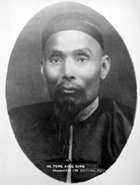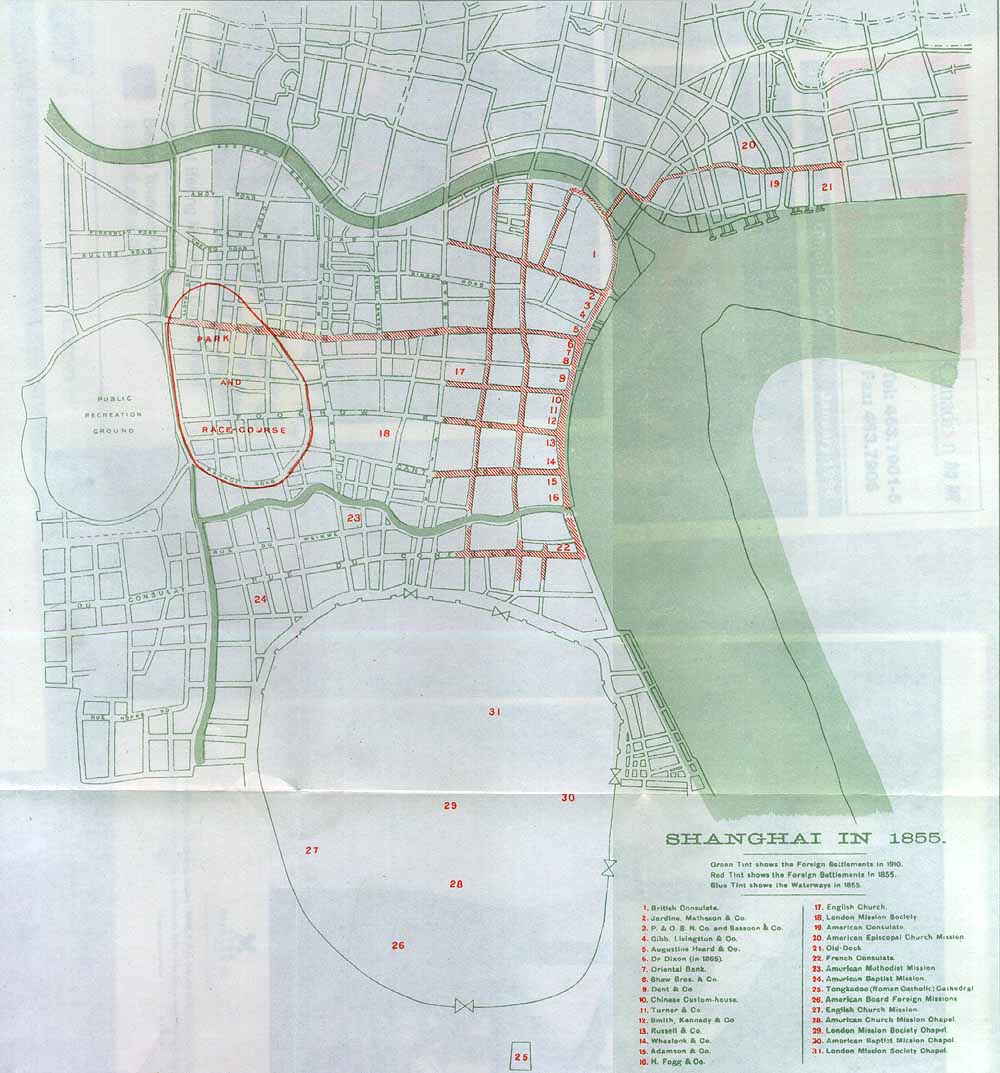|
Hsukochuang
Xugezhuang is a former village () and modern town () of Fengnan District in Hebei, China. It was the terminus of the second railway to be constructed in China after the abortive Woosung Railway in Shanghai. The six-mile Kaiping Tramway opened to traffic in 1881 and ran from the collieries at Tangshan to Xugezhuang (then known as Hsuokochuang),Huenemann, Ralph Wm. Harvard East Asian Monographs, No. 109. The Dragon and the Iron Horse: the Economics of Railroads in China, 1876–1937', p. 254. Harvard Univ Asia Center, 1984. . Accessed 12 October 2011. whence a canal connected it to Lutai and the river network between Beijing and Tianjin. It eventually grew into the Imperial Railways of North China and the modern Jingshan and Jingha Railways. See also * Claude W. Kinder *List of township-level divisions of Hebei This is a list of township-level divisions of the province of Hebei, People's Republic of China (PRC). After province, prefecture, and county-level divisions, towns ... [...More Info...] [...Related Items...] OR: [Wikipedia] [Google] [Baidu] |
Imperial Railways Of North China
The first railway to be built and survive in China was the Kaiping (開平) colliery tramway located at Tangshan in Hebei province. However, this was not the very first railway in China. An earlier attempt to introduce railways had been made in 1876 when the short Shanghai to Wusong narrow gauge line known as the "Woosung Road Company" was built but then pulled up within less than two years because of Chinese government opposition. History Cantonese merchant Tong King-sing (唐景星 a.k.a. Tang Ting-shu 唐廷樞) was a Hong Kong Government interpreter who later became Jardine Matheson & Company’s head comprador at Shanghai. In 1878 Tong, who was then Director-General of the China Merchants' Steam Navigation Company, commenced coal mining operations in the Kaiping district with the backing of the powerful Viceroy of Zhili Li Hongzhang.Ellesworth Carlson: “The Kaiping Mines 1877-1912”, Harvard Univ. Press, 1957. .Linda Pomerantz-Zhang: “Wu Tingfang (1842-1922) Reform and ... [...More Info...] [...Related Items...] OR: [Wikipedia] [Google] [Baidu] |
Tangshan
Tangshan ( zh, c=唐山 , p=Tángshān) is a coastal, industrial prefecture-level city in the northeast of Hebei province. It is located in the eastern part of Hebei Province and the northeastern part of the North China Plain. It is located in the central area of the Bohai Economic Rim, Bohai Rim and serves as the main traffic corridor to the Northeast China, Northeast. The city faces the Bohai Sea in the south, the Yan Mountains in the north, Qinhuangdao across the Luan River to the east, and Tianjin to the west. Much of the city's development is thanks to the industrialization, beginning in 1870, when Kailuan Group established coal mines in the region. It is the birthplace of China's first standard-gauge railway, the first railway plant, the first steam locomotive, and the first cement factory. It was hailed as China's "cradle of industrialization". Even today, Tangshan is a hub of steel, energy, Chemical engineering, chemical, and ceramics production. Ping opera, which origina ... [...More Info...] [...Related Items...] OR: [Wikipedia] [Google] [Baidu] |
Town (China)
When referring to Administrative divisions of China#Township level (4th), political divisions of China, town is the standard English translation of the Chinese (traditional: ; zh, p=zhèn , w=chen4). The Constitution of the People's Republic of China classifies towns as fourth-level administrative units, along with, for example, Townships of China, townships ( zh, s=乡 , p=xiāng). A township is typically smaller in population and more remote than a town. Similar to higher-level administrative units, the borders of a town would typically include an urban core (a small town with the population on the order of 10,000 people), as well as a rural area with some Villages of China, villages ( zh, labels=no, s=村 , p=cūn, or zh, labels=no, s=庄 , p=zhuāng). Map representation A typical provincial map would merely show a town as a circle centered at its urban area and labeled with its name, while a more detailed one (e.g., a map of a single county-level division) would also s ... [...More Info...] [...Related Items...] OR: [Wikipedia] [Google] [Baidu] |
Fengnan District
Fengnan District () is a District (China), district of Tangshan, Hebei, China on the coast of the Bohai Sea and bordering Tianjin to the west. The district spans an area of , and has a population of approximately 530,000 as of 2012. Toponymy Fengnan District was first established as Fengnan County in 1946, when it was carved out of the southern portions of Fengrun County and Luanzhou County. Its name, which literally means "south of Feng", was derived from this. History During the time of the Shang dynasty, the area of present-day Fengnan District belonged to the state of Guzhu. During the time of the Zhou dynasty, the area was part of the state of Yan (state), Yan. In the Qin dynasty, the area was split between Youbeiping Commandery and Liaoxi Commandery. During the Han dynasty, it was administered by Tuyin County () and Changcheng County (). During the Sui dynasty the area belonged to Lulong County () and Wuzhong County (). During the Tang dynasty, the area belonged to Yutia ... [...More Info...] [...Related Items...] OR: [Wikipedia] [Google] [Baidu] |
Hebei
Hebei is a Provinces of China, province in North China. It is China's List of Chinese administrative divisions by population, sixth-most populous province, with a population of over 75 million people. Shijiazhuang is the capital city. It borders Shanxi to the west, Henan to the south, Shandong and Liaoning to the east, and Inner Mongolia to the north; in addition, Hebei entirely surrounds the direct-administered municipalities of Beijing and Tianjin on land. Its population is 96% Han Chinese, 3% Manchu people, Manchu, 0.8% Hui people, Hui, and 0.3% Mongols in China, Mongol. Varieties of Chinese spoken include Jilu Mandarin, the Beijing dialect of Mandarin, and Jin Chinese. During the Spring and Autumn period, Spring and Autumn and Warring States periods (771–226 BC), the region was ruled by the states of Yan (state), Yan and Zhao (state), Zhao. During the Yuan dynasty (1271–1368), the region was called Zhongshu Sheng, Zhongshu. It was called North Zhili during the ... [...More Info...] [...Related Items...] OR: [Wikipedia] [Google] [Baidu] |
Woosung Railway
The Woosung railway ()Also Wusong Road or Woo Sung RailwayIt is sometimes also called the Songhu railway, although that name more properly refers to the 1890s railway which ran principally along the same route. was a 19th-century, narrow-gauge passenger railway in Shanghai, China, between the outskirts of the American Concession in the modern city's Zhabei District and Wusong in Baoshan District. Surreptitiously conceived and constructed, it ran for less than a year before it was purchased and dismantled by the Qing viceroy Shen Baozhen. The line would not be rebuilt for twenty years. This fate was a commonly invoked symbol of the Qing dynasty's backwardness and insularity, despite the road's admitted illegality and numerous legitimate objections voiced by the Chinese during its construction and operation. Its routestill primarily rural as late as the turn of the centurynow forms part of the Shanghai Metro's elevated Line 3. History Background Following the success of the ... [...More Info...] [...Related Items...] OR: [Wikipedia] [Google] [Baidu] |
Shanghai
Shanghai, Shanghainese: , Standard Chinese pronunciation: is a direct-administered municipality and the most populous urban area in China. The city is located on the Chinese shoreline on the southern estuary of the Yangtze River, with the Huangpu River flowing through it. The population of the city proper is the List of largest cities, second largest in the world after Chongqing, with around 24.87 million inhabitants in 2023, while the urban area is the List of cities in China by population, most populous in China, with 29.87 million residents. As of 2022, the Greater Shanghai metropolitan area was estimated to produce a gross metropolitan product (GDP (nominal), nominal) of nearly 13 trillion Renminbi, RMB ($1.9 trillion). Shanghai is one of the world's major centers for finance, #Economy, business and economics, research, science and technology, manufacturing, transportation, List of tourist attractions in Shanghai, tourism, and Culture of Shanghai, culture. The Port of Sh ... [...More Info...] [...Related Items...] OR: [Wikipedia] [Google] [Baidu] |
Lutai
Lutai () is a town in and the seat of Ninghe District, in the northeast of Tianjin, People's Republic of China. In the late 19th and early 20th centuries, it was the terminus for the Lutai Canal and the first extension of the Kaiping Tramway. By road, it is from Tianjin Binhai International Airport, from downtown Tianjin, and from downtown Beijing. , it had 28 residential communities () and 37 villages under its administration. See also *List of township-level divisions of Tianjin This is a list of Administrative divisions of the People's Republic of China#Township level, township-level divisions of the municipality of Tianjin, People's Republic of China (PRC). After Province-level divisions of the People's Republic of Chin ... References Towns in Tianjin {{china-hist-stub ... [...More Info...] [...Related Items...] OR: [Wikipedia] [Google] [Baidu] |
Beijing
Beijing, Chinese postal romanization, previously romanized as Peking, is the capital city of China. With more than 22 million residents, it is the world's List of national capitals by population, most populous national capital city as well as China's List of cities in China by population, second largest city by urban area after Shanghai. It is located in North China, Northern China, and is governed as a Direct-administered municipalities of China, municipality under the direct administration of the Government of the People's Republic of China, State Council with List of administrative divisions of Beijing, 16 urban, suburban, and rural districts.Figures based on 2006 statistics published in 2007 National Statistical Yearbook of China and available online at archive. Retrieved 21 April 2009. Beijing is mostly surrounded by Hebei Province and neighbors Tianjin to the southeast; together, the three divisions form the Jing-Jin-Ji, Jing-Jin-Ji cluster. Beijing is a global city and ... [...More Info...] [...Related Items...] OR: [Wikipedia] [Google] [Baidu] |
Tianjin
Tianjin is a direct-administered municipality in North China, northern China on the shore of the Bohai Sea. It is one of the National Central City, nine national central cities, with a total population of 13,866,009 inhabitants at the time of the 2020 Chinese census. Its metropolitan area, which is made up of 12 central districts (other than Baodi District, Baodi, Jizhou District, Tianjin, Jizhou, Jinghai District, Jinghai and Ninghe District, Ninghe), was home to 11,165,706 inhabitants and is also the world's 29th-largest agglomeration (between Chengdu and Rio de Janeiro) and 11th-List of cities proper by population, most populous city proper. Tianjin is governed as one of the four municipalities (alongside Beijing, Shanghai, and Chongqing) under the direct-administered municipalities of China, direct administration of the State Council of the People's Republic of China, State Council of Government of China, China. The city borders Hebei Province and Beijing Municipality, bounded ... [...More Info...] [...Related Items...] OR: [Wikipedia] [Google] [Baidu] |
Jingshan Railway
Jingshan may refer to the following locations: *The Jing Mountains (), Hubei * Jingshan, Hubei (), county-level city of Jingmen, Hubei * Jingshan Park (), in Beijing * Beijing Jingshan School, in Beijing * Beijing–Shanhaiguan railway, or Jingshan railway (), railway from Beijing to Shanhaiguan, Hebei Jing Shan Primary School, in Singapore ;Subdistricts * Jingshan Subdistrict, Wuhu (), subdivision of Jinghu District, Wuhu, Anhui * Jingshan Subdistrict, Nanchang (), subdivision of Qingyunpu District, Nanchang, Jiangxi Written as "": * Jingshan Subdistrict, Beijing, subdivision of Dongcheng District, Beijing *, subdivision of Ouhai District, Wenzhou, Zhejiang ;Towns * Jingshan, Jilin (), subdivision of Jingyu County, Jilin * Jingshan, Hangzhou (), subdivision of Yuhang District, Hangzhou, Zhejiang {{geodis ... [...More Info...] [...Related Items...] OR: [Wikipedia] [Google] [Baidu] |






